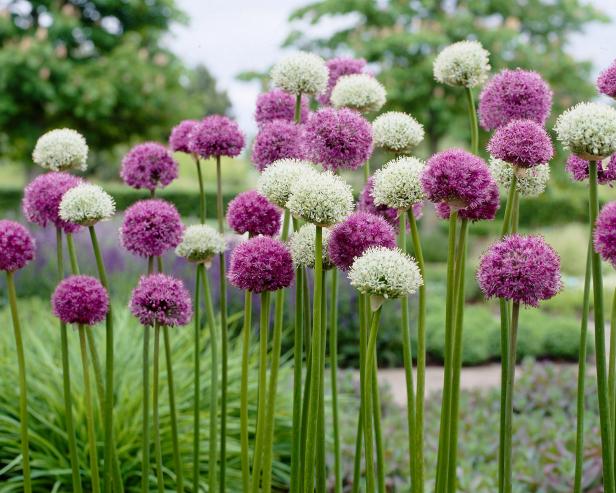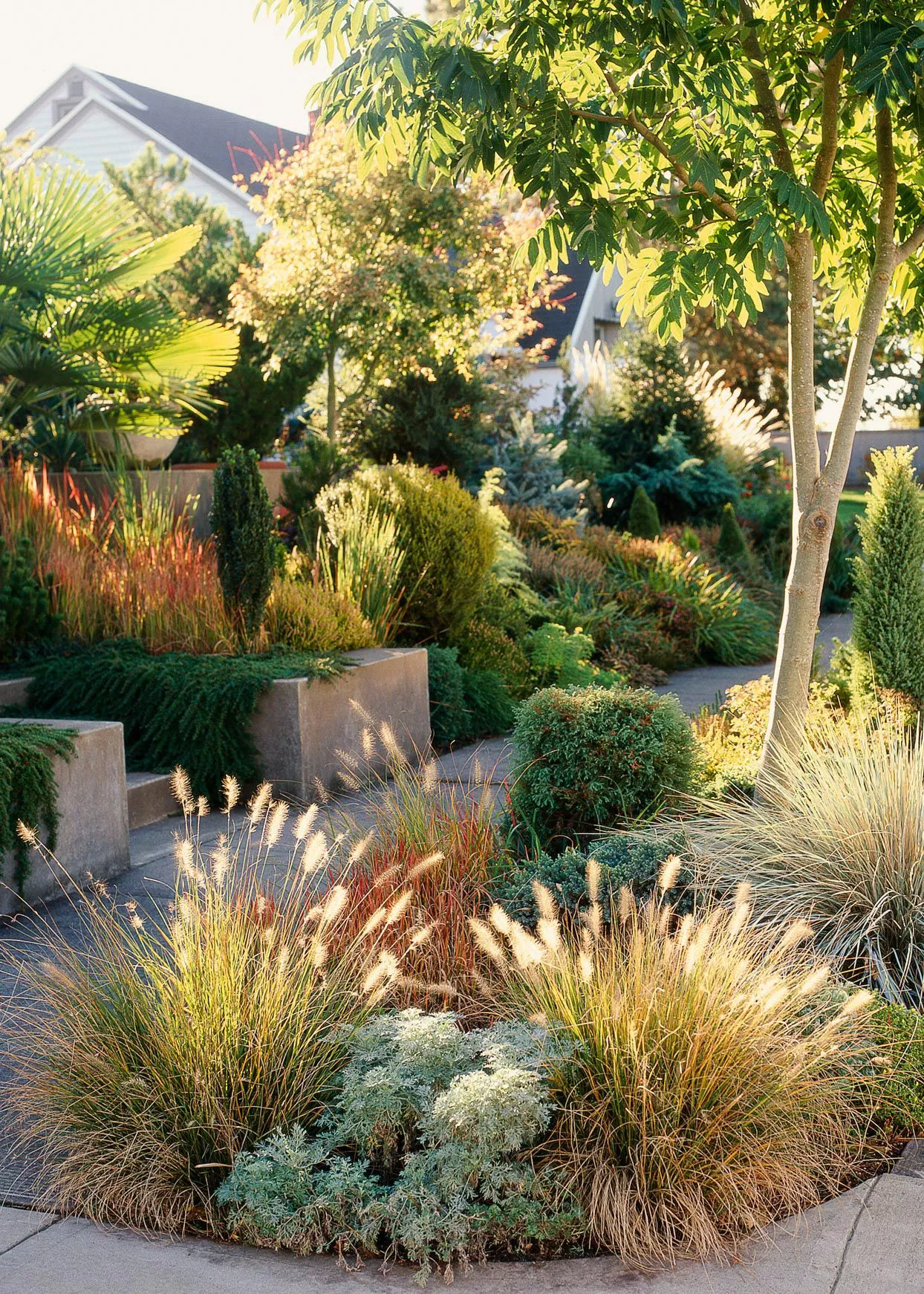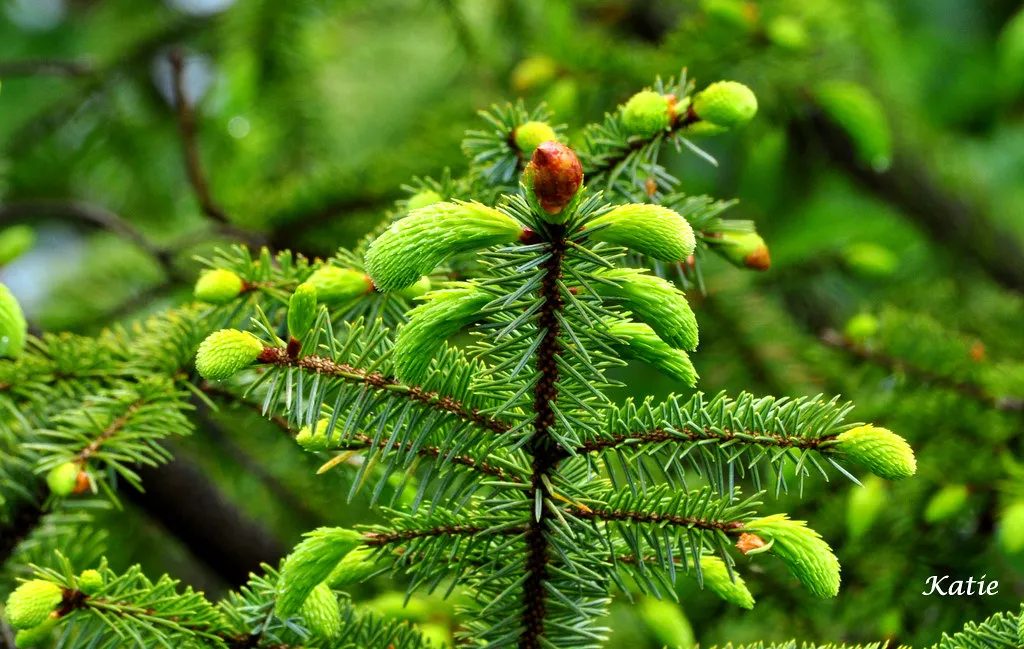Desert climates demand hardy plants. Drought-resistant plants thrive with minimal water, making them perfect for dry regions.
Creating a lush garden in arid areas can be challenging. Drought-resistant plants offer a practical solution. These plants adapt well to low-water conditions, providing beauty and sustainability. They reduce water consumption and maintenance efforts. Popular choices include succulents, cacti, and native perennials.
These plants come in various shapes, sizes, and colors, adding diversity to your landscape. Selecting the right drought-resistant plants ensures your garden stays vibrant. They also support local ecosystems by providing habitat for wildlife. Embrace these resilient plants to create a stunning, eco-friendly oasis in your dry garden.
Agave
Agave is a stunning, resilient plant perfect for dry climates. Known for its striking appearance and minimal water needs, it’s a favorite for desert gardens. Let’s explore the characteristics and care tips for Agave.
Characteristics
Agave plants are known for their succulent leaves and sharp spines. These leaves often form a rosette shape, making them visually appealing. Agave comes in various sizes, from small to very large, fitting different garden spaces.
- Succulent leaves: Store water efficiently.
- Sharp spines: Deter animals from eating them.
- Rosette shape: Adds a unique design element to gardens.
- Variety of sizes: Suitable for different garden spaces.
Care Tips
Agave plants thrive with minimal care. Here are some essential tips:
- Sunlight: Agave loves full sunlight. Ensure it gets at least 6 hours of direct sun daily.
- Soil: Use well-draining soil. Sandy or rocky soil works best.
- Watering: Water sparingly. Once a month in summer is usually enough.
- Temperature: Agave tolerates high temperatures. Protect from freezing conditions.
- Fertilizing: Fertilize once a year with a balanced, slow-release fertilizer.
| Care Aspect | Details |
|---|---|
| Sunlight | Full sun, at least 6 hours daily |
| Soil | Well-draining, sandy or rocky |
| Watering | Sparingly, once a month in summer |
| Temperature | Tolerates high heat, avoid freezing |
| Fertilizing | Once a year with balanced fertilizer |
Aloe Vera
Aloe Vera is a versatile plant known for its healing properties. This succulent thrives in dry climates, making it an ideal choice for desert landscapes. Its fleshy leaves store water, allowing it to endure long periods of drought.
Health Benefits
Aloe Vera offers numerous health benefits:
- Soothes sunburns and skin irritations
- Promotes wound healing
- Moisturizes dry skin
- Improves digestive health
- Reduces inflammation
The gel from Aloe Vera leaves can be applied directly to the skin. It has cooling and anti-inflammatory properties. This makes it a popular choice for natural skincare routines.
Growing Conditions
Aloe Vera thrives in specific growing conditions:
| Factor | Requirement |
|---|---|
| Sunlight | Full sun to partial shade |
| Soil | Well-drained, sandy soil |
| Watering | Infrequent, deep watering |
| Temperature | Warm, above 50°F (10°C) |
Ensure the soil is well-drained to prevent root rot. Water the plant deeply but allow the soil to dry out between waterings. This mimics its natural desert habitat. Place the plant in a sunny spot for optimal growth.
With these conditions, Aloe Vera can flourish, adding beauty and utility to your garden. It’s a resilient plant that requires minimal maintenance, making it perfect for dry climates.
Sage
Sage is a versatile and hardy plant perfect for dry climates. This drought-resistant herb thrives in arid conditions, making it an excellent choice for desert gardens. Sage not only adds beauty to your landscape but also offers aromatic and culinary benefits.
Types Of Sage
There are various types of sage suitable for dry climates. Each type has unique characteristics that make it ideal for different landscaping needs.
- Common Sage (Salvia officinalis): Known for its gray-green leaves and purple flowers.
- White Sage (Salvia apiana): Features silvery leaves and is often used in smudging rituals.
- Pineapple Sage (Salvia elegans): Has a fruity aroma with bright red flowers.
- Russian Sage (Perovskia atriplicifolia): Offers tall spikes of lavender-blue flowers.
- Texas Sage (Leucophyllum frutescens): Boasts silver foliage with purple blooms.
Uses In Landscaping
Sage can be used in many ways to enhance your garden. Here are some popular uses:
- Ground Cover: Low-growing types of sage make excellent ground cover. They help prevent soil erosion and add texture to the landscape.
- Border Plants: Use sage to create attractive borders along pathways or garden edges. Their colorful flowers can brighten up any space.
- Container Gardening: Sage grows well in pots, making it a great choice for patios or balconies. Choose a sunny spot for best results.
- Wildlife Attractor: The flowers of sage attract pollinators like bees and butterflies. This helps support local ecosystems.
- Herb Gardens: Plant sage in your herb garden for culinary uses. It pairs well with meats, soups, and teas.
| Sage Type | Key Features |
|---|---|
| Common Sage | Gray-green leaves, purple flowers |
| White Sage | Silvery leaves, used in smudging |
| Pineapple Sage | Fruity aroma, bright red flowers |
| Russian Sage | Tall spikes, lavender-blue flowers |
| Texas Sage | Silver foliage, purple blooms |

Credit: www.shutterstock.com
Lavender
Lavender is a beautiful and fragrant plant. It thrives in dry climates. This makes it perfect for desert gardens. Its purple flowers add a splash of color. Lavender is also easy to care for. Let’s dive into its many benefits.
Fragrance And Uses
Lavender is famous for its soothing scent. People use it in aromatherapy. The fragrance helps to reduce stress. You can also use lavender in cooking. It adds a unique flavor to dishes. Lavender oil is popular in skincare products. It helps to moisturize and heal the skin.
Planting And Maintenance
Lavender grows best in full sun. It prefers well-drained soil. Plant lavender in the spring. Water it sparingly. Overwatering can harm the plant. Trim the plant after it flowers. This helps it grow strong.
| Planting Time | Sunlight | Soil Type | Watering |
|---|---|---|---|
| Spring | Full Sun | Well-Drained | Sparingly |
Lavender is also pest-resistant. This means fewer chemicals are needed. It’s a sustainable choice for your garden.
Cactus Varieties
Desert landscapes can be vibrant with the right plants. Cactus varieties are perfect for dry climates. They are not only beautiful but also require low maintenance. Let’s explore some popular types and their watering needs.
Popular Types
- Saguaro: Iconic tall cactus with arms.
- Barrel Cactus: Round, ribbed, and spiky.
- Prickly Pear: Flat pads with bright flowers.
- Cholla: Cylindrical stems with sharp spines.
- Golden Barrel: Bright yellow spines and spherical shape.
Watering Needs
| Cactus Type | Watering Frequency | Comments |
|---|---|---|
| Saguaro | Every 2-3 weeks | Avoid overwatering. |
| Barrel Cactus | Once a month | Water deeply but infrequently. |
| Prickly Pear | Every 2-4 weeks | Ensure soil is dry between watering. |
| Cholla | Every 3-4 weeks | Needs well-draining soil. |
| Golden Barrel | Once a month | Water sparingly in winter. |
Choose the right cactus for your garden. Ensure you meet their specific watering needs. This will help them thrive in your dry climate.
Yucca
The yucca plant is a stunning addition to any desert garden. Known for its sword-like leaves and tall flower spikes, it thrives in dry, hot climates. With its unique appearance and low water needs, yucca is a top choice for drought-resistant gardening.
Growth Habits
Yucca plants grow in a variety of shapes and sizes. They can be small shrubs or tall trees. Their leaves are long, narrow, and pointed. Yuccas produce beautiful, tall flower spikes in the summer. These spikes can reach up to 12 feet tall. The flowers are usually white or cream and very fragrant.
Yucca plants grow slowly but are very long-lived. They can survive in harsh conditions where other plants fail. These plants are also very low-maintenance. They require little care once established.
Soil Requirements
Yuccas prefer well-drained soil. They can tolerate poor soil but do not like wet feet. Sandy or rocky soil is ideal. If your soil is heavy clay, consider adding sand or gravel. This will improve drainage and keep the roots healthy.
These plants also thrive in slightly acidic to neutral soil. A pH range of 6.0 to 7.5 is perfect. You can use a simple soil test kit to check the pH. If needed, adjust the soil pH with lime or sulfur.
| Soil Type | Preference |
|---|---|
| Sandy | High |
| Rocky | High |
| Clay | Low (improve with amendments) |
Remember to water the plant sparingly. Overwatering can cause root rot. Allow the soil to dry out completely between waterings. This mimics the yucca’s natural desert environment.
Lantana
Lantana is a vibrant, drought-resistant plant perfect for dry climates. With its stunning colors and easy maintenance, it’s a favorite for many gardeners. Below, we dive into its flowering patterns and pest resistance to help you better understand this incredible plant.
Flowering Patterns
Lantana boasts a unique flowering pattern that captivates any garden. The flowers come in clusters of bright colors such as red, orange, yellow, and pink.
These clusters often change colors as they mature, offering a delightful visual treat. Lantana blooms from spring through fall, providing long-lasting beauty.
This continuous blooming makes it a great choice for any landscape. Each flower cluster attracts pollinators, including butterflies and bees, enhancing your garden’s ecosystem.
Pest Resistance
Lantana is known for its exceptional pest resistance. This plant naturally repels many common garden pests, reducing the need for pesticides.
Its leaves contain compounds that deter insects, making it an excellent choice for organic gardens. While Lantana is generally pest-resistant, keep an eye out for spider mites and whiteflies.
If these pests appear, simple treatments like neem oil or insecticidal soap can handle them. Lantana’s robust nature means it thrives with minimal intervention.
| Feature | Details |
|---|---|
| Flower Colors | Red, Orange, Yellow, Pink |
| Bloom Time | Spring through Fall |
| Pest Resistance | High |
| Common Pests | Spider Mites, Whiteflies |
| Pollinators Attracted | Butterflies, Bees |
In summary, Lantana is a brilliant addition to any dry climate garden. With its vibrant flowering patterns and strong pest resistance, it ensures a lively and low-maintenance landscape.

Credit: planetdesert.com
Jade Plant
The Jade Plant is a popular choice for dry climates. It is known for its thick, glossy, green leaves and easy care requirements. This succulent can thrive both indoors and outdoors, making it a versatile addition to any garden or home.
Indoor And Outdoor Care
Indoor Care:
- Place in a bright, sunny spot.
- Water sparingly, allowing soil to dry out between waterings.
- Use a well-draining potting mix.
- Avoid placing near drafts or cold windows.
Outdoor Care:
- Plant in a sunny location with partial shade during peak sun hours.
- Ensure soil is well-draining to prevent root rot.
- Water deeply but infrequently.
- Protect from frost during colder months.
Propagation Tips
Propagating the Jade Plant is simple and can be done using stem or leaf cuttings.
| Method | Steps |
|---|---|
| Stem Cuttings |
|
| Leaf Cuttings |
|
With these tips, growing a Jade Plant can be rewarding. This drought-resistant plant adds beauty to both indoor and outdoor spaces.
Bougainvillea
Among the drought-resistant plants for dry climates, Bougainvillea stands out. Its vibrant colors and hardy nature make it a favorite. This plant thrives in hot, arid conditions, adding beauty to any landscape.
Vibrant Colors
Bougainvillea offers a stunning range of colors. These include pink, red, purple, orange, and white. Its bracts, not flowers, provide these bright hues. The actual flowers are small and white, hidden by the colorful bracts.
This plant can transform any dry garden into a colorful oasis. Its vibrant colors attract bees and butterflies, adding life to your garden.
Training And Pruning
Bougainvillea needs proper training and pruning for the best growth. You can train it as a bush, a tree, or a vine. Use a trellis or fence if you want it to climb.
Prune the plant regularly to maintain its shape and size. Cut back overgrown branches after the blooming season. This encourages new growth and more blooms.
Always use clean, sharp tools to avoid plant diseases. Regular pruning also helps improve air circulation and sunlight penetration.
| Aspect | Details |
|---|---|
| Watering | Sparse, only during dry spells |
| Sunlight | Full sun, at least 6 hours daily |
| Soil | Well-drained, slightly acidic |
- Bougainvillea is drought-resistant.
- It offers vibrant colors.
- Training and pruning are essential.
Russian Sage
Russian Sage is a hardy perennial known for its drought resistance. This plant adds a splash of purple to any dry landscape. It thrives in harsh conditions and requires minimal care.
Drought Tolerance
Russian Sage is a champion in drought tolerance. It can survive long periods without water. This makes it perfect for dry climates. Its deep root system helps it access moisture deep in the soil.
| Characteristic | Details |
|---|---|
| Water Needs | Low |
| Soil Type | Well-drained |
| Sunlight | Full Sun |
Seasonal Care
Russian Sage requires little care throughout the year. Here are some tips for each season:
- Spring: Prune dead stems to encourage new growth.
- Summer: Water sparingly, only during extreme drought.
- Fall: Remove spent flowers to tidy up the plant.
- Winter: Mulch to protect roots from extreme cold.
Follow these simple steps to keep your Russian Sage thriving year-round. Enjoy its vibrant blooms and aromatic foliage in your dry garden.
Euphorbia
Euphorbia is a diverse genus of flowering plants that thrive in dry climates. Known for their unique shapes and resilience, these plants are perfect for desert gardens. Euphorbia species offer a variety of textures and colors, making them a versatile choice for landscaping.
Varieties To Grow
There are many Euphorbia varieties suitable for arid environments. Here are a few popular ones:
- Euphorbia tirucalli – Also known as the Pencil Tree, it has slender, pencil-like branches.
- Euphorbia rigida – This plant features blue-green leaves and yellow flowers.
- Euphorbia obesa – Known as the Baseball Plant, it has a round, ball-like shape.
- Euphorbia milii – Commonly referred to as the Crown of Thorns, it has thorny stems and colorful bracts.
Safety Considerations
Euphorbia plants produce a milky sap that can be harmful. Here are some safety tips:
- Wear gloves – Always use gloves when handling these plants.
- Avoid contact – Keep the sap away from your eyes and skin.
- Wash hands – Clean your hands thoroughly after handling Euphorbia.
- Keep away from pets – Ensure pets do not chew on these plants.
By choosing the right Euphorbia variety and following safety measures, you can enjoy these unique, drought-resistant plants in your garden.

Credit: www.hgtv.com
Rockrose
The Rockrose is a stunning and hardy plant perfect for dry climates. These vibrant shrubs bring color to any desert oasis. They are well-known for their resilience and beauty.
Flowering Season
The Rockrose blooms from late spring to early summer. Its flowers are bright and attractive. They can be pink, white, or yellow. Each flower lasts only a day, but new ones open daily. This keeps your garden colorful for weeks.
Soil Preferences
The Rockrose thrives in poor, well-drained soil. It prefers sandy or rocky soil types. Heavy clay soil can hinder its growth. Ensure the soil is not waterlogged. This plant is drought-resistant and does not need much water.
| Soil Type | Suitability |
|---|---|
| Sandy | Excellent |
| Rocky | Good |
| Clay | Poor |
To grow a Rockrose, plant it in a sunny location. Water sparingly and avoid fertilizing too much. With these simple steps, you can enjoy a beautiful, drought-resistant garden.
Thyme
Thyme is a versatile herb that thrives in dry climates. Known for its aromatic leaves and tiny flowers, it adds flavor to dishes and beauty to gardens. It is a drought-resistant plant, making it perfect for desert landscapes.
Culinary Uses
Thyme is a staple in many kitchens. It brings a unique flavor to food.
- Soups: Thyme adds depth to broths and stews.
- Meats: Rub thyme on chicken or beef for a savory taste.
- Vegetables: Sprinkle thyme on roasted vegetables for extra flavor.
- Salads: Fresh thyme leaves enhance salad dressings.
Thyme is easy to dry and store. This keeps the flavor strong all year round.
Growing In Dry Conditions
Thyme is perfect for dry climates. It needs little water to thrive.
| Requirement | Details |
|---|---|
| Sunlight | Full sun for best growth. |
| Soil | Well-drained, sandy soil. |
| Water | Water only when soil is completely dry. |
| Spacing | Plant 12 to 24 inches apart. |
Thyme is low-maintenance. It does well in poor soils and hot temperatures. This makes it ideal for desert gardens.
Prune thyme regularly. This encourages new growth and keeps the plant healthy.
Thyme also attracts beneficial insects. Bees and butterflies love its tiny flowers.
Sedum
Sedum is a versatile and hardy succulent. It thrives in dry climates and requires little maintenance. This makes it perfect for desert gardens and drought-prone areas. With its vibrant colors and unique textures, sedum adds visual interest to any landscape.
Ground Cover Benefits
Sedum serves as an excellent ground cover. It spreads quickly and creates a dense mat. This helps in preventing soil erosion. The thick foliage also reduces weed growth, saving you time and effort. Sedum’s low-growing habit makes it ideal for filling gaps between stones or along pathways.
Sunlight Needs
Sedum loves sunlight. It thrives best in full sun conditions. Aim for at least six hours of direct sunlight daily. This ensures that the plant stays healthy and vibrant. Sedum can tolerate partial shade but may not bloom as profusely.
| Feature | Description |
|---|---|
| Watering | Low water requirements. Water sparingly. |
| Soil Type | Well-draining, sandy soil preferred. |
| Temperature | Tolerates a wide range of temperatures. |
In summary, sedum is a smart choice for dry climates. Its ground cover benefits and sunlight needs make it a standout plant. Add sedum to your garden for a resilient and beautiful landscape.
Red Hot Poker
The Red Hot Poker, also known as Kniphofia, is a stunning perennial. It is famous for its vibrant, torch-like flowers. This plant thrives in dry climates and adds a fiery touch to any garden.
Blooming Cycle
The Red Hot Poker has a unique blooming cycle. It usually blooms from early summer to late fall. The flowers change colors as they mature, creating a striking visual effect. They start as red or orange and fade to yellow, resembling a burning torch.
The bloom period can last several months. Regular deadheading can extend the blooming cycle. This encourages new flower spikes to grow.
Planting Zones
The Red Hot Poker is suitable for various planting zones. It thrives best in USDA zones 5 through 9. This plant prefers full sun and well-drained soil. It can tolerate drought conditions, making it perfect for dry climates.
Below is a table summarizing the key planting zone information:
| USDA Zone | Sunlight | Soil Type |
|---|---|---|
| 5-9 | Full Sun | Well-drained |
When planting, space the plants about 18-24 inches apart. This gives them room to grow and ensures proper airflow. Proper spacing helps prevent diseases.
- USDA Zones: 5-9
- Sunlight: Full Sun
- Soil Type: Well-drained
Verbena
Verbena is a stunning plant known for its bright, colorful blooms. This low-maintenance beauty thrives in dry climates, making it perfect for your desert garden. With its ability to attract pollinators and withstand drought, Verbena is a top choice for any arid landscape.
Attracting Pollinators
Verbena plants are a magnet for pollinators like butterflies, bees, and hummingbirds. Their clusters of small, vibrant flowers provide a rich source of nectar. This not only enhances the beauty of your garden but also supports local ecosystems.
Planting Verbena helps promote biodiversity. Pollinators play a crucial role in the health of your garden. Here are some key points on how Verbena attracts pollinators:
- Bright Colors: The vivid flowers are easy for pollinators to spot.
- Rich Nectar: Verbena offers a plentiful nectar supply.
- Long Blooming Season: Flowers from spring to fall.
Drought Resilience
Verbena is incredibly drought-tolerant. It requires minimal water once established. This makes it an ideal choice for dry climates. Here are some benefits of Verbena’s drought resilience:
| Benefit | Description |
|---|---|
| Low Water Needs | Requires watering only during extreme drought. |
| Heat Tolerance | Withstands high temperatures without wilting. |
| Low Maintenance | Minimal care required after establishment. |
Follow these tips to ensure your Verbena thrives:
- Plant in well-draining soil.
- Water sparingly after the first few weeks.
- Prune regularly to encourage new growth.
Verbena’s drought resilience and ability to attract pollinators make it a standout choice. Your desert garden will flourish with this vibrant plant.
Oleander
Oleander is a stunning, evergreen shrub that thrives in dry climates. It is known for its vibrant flowers and hardy nature. This plant can withstand extreme heat and drought, making it perfect for desert gardens.
Flower Varieties
Oleander offers a variety of colorful flowers. These blooms can be found in shades of white, pink, red, and yellow. Each color adds a unique touch to your garden. This diversity allows for creative landscaping options.
- White Oleander: Pure white blooms, symbolizing elegance.
- Pink Oleander: Soft pink flowers, adding a romantic vibe.
- Red Oleander: Bright red blossoms, bringing energy to your space.
- Yellow Oleander: Sunny yellow petals, offering a cheerful look.
Toxicity Warnings
Oleander is beautiful but highly toxic. All parts of the plant are poisonous. This includes leaves, flowers, and stems. It is crucial to keep children and pets away from Oleander.
Ingesting any part of the plant can cause severe health issues. Symptoms include nausea, vomiting, and irregular heartbeats. Always wash your hands after handling Oleander. Wear gloves while pruning or planting.
| Part of Plant | Toxic Effect |
|---|---|
| Leaves | Nausea, Vomiting |
| Flowers | Irregular Heartbeats |
| Stems | Severe Poisoning |
Use caution and enjoy the beauty of Oleander. Its vibrant blooms and drought-resistant nature make it a valuable addition to any dry climate garden.
Pineapple Guava
The Pineapple Guava, also known as Feijoa sellowiana, is a drought-resistant plant. It thrives in dry climates and offers multiple benefits. This remarkable plant is both practical and beautiful.
Edible Fruits
The Pineapple Guava produces delicious, edible fruits. These fruits have a unique flavor, a mix of pineapple, guava, and mint. They are rich in vitamins, especially vitamin C.
- Fruits are oval and green.
- Harvest typically in late fall.
- Fruits can be eaten fresh or used in desserts.
| Feature | Description |
|---|---|
| Fruit Size | 2-3 inches long |
| Flavor | Mix of pineapple, guava, and mint |
| Harvest Season | Late fall |
Ornamental Value
The Pineapple Guava is not just functional; it’s also ornamental. It boasts beautiful flowers with white petals and red stamens. These flowers bloom in spring, adding color to your garden.
- Flowers attract hummingbirds and bees.
- Leaves are evergreen, providing year-round greenery.
- Can be grown as a shrub or small tree.
This plant can also serve as a hedge or standalone specimen. Its aesthetic appeal is undeniable, making it a valuable addition to any garden.
Consider the Pineapple Guava for its resilience and beauty. It’s perfect for creating a stunning desert oasis.
Frequently Asked Questions
What Are Drought-resistant Plants?
Drought-resistant plants are species that thrive in low-water conditions. They require minimal watering, making them ideal for dry climates.
How Do Drought-resistant Plants Save Water?
Drought-resistant plants have adapted to store water efficiently. They reduce water loss through specialized leaves, stems, or roots.
Which Plants Are Best For Dry Climates?
Some top drought-resistant plants include succulents, lavender, sage, and cacti. These plants thrive in arid conditions.
Can Drought-resistant Plants Survive Extreme Heat?
Yes, many drought-resistant plants can tolerate extreme heat. Their adaptations help them conserve water and endure high temperatures.
Conclusion
Creating a desert oasis is easier with drought-resistant plants. These resilient species thrive in dry climates. They reduce water usage and beautify your garden. Embrace nature’s adaptability and enhance your landscape. Choose from these 20 plants and transform your arid space into a lush haven.
Enjoy sustainable and stunning greenery.



